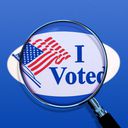News organizations look for other political indicators besides polls

Published Date: 11/13/2020
Source: axios.com
With political polls looking close to useless, newsrooms are increasingly turning to internet trends, demographics and local news in an effort to crack America’s baffling political code.Why it matters: This election proved that polls aren't the only way to measure public opinion trends — and that other measures, like social media, may give us a window into enthusiasm among populations that polls are missing.It's "well past the time to start realizing that what people say on Facebook and in comments sections is what they actually mean," Ben Collins, a reporter on the "dystopia" beat for NBC News, tells Axios.Driving the news: A new analysis conducted by the University of Southern California after the election found that voters in swing states like Florida, Georgia, and North Carolina engaged in QAnon content online more than twice as much as the average voter in other states. Polling "may have missed a subpopulation of QAnon supporters who voted for Trump but never participated in the traditional survey polls," says Dr. Emilio Ferrara, a professor at USC that helped conduct the study for USA Today. "Certain segments of the population that are hard to reach with traditional surveys may express their ideas on social media," he tells Axios. The state of play: One of the biggest challenges pollsters have faced recently is a dwindling response rate, Axios' Sara Kehaulani Goo reports. Because of this, newsrooms are looking to invest more heavily in coverage of social media and internet trends as a way to observe political sentiment from a wider group of people. There was a noticeable uptick in reporters seeking social media statistics during the last six weeks or so leading up to the election, according to Benedict Nicholson, head of research and editorial at the social media analytics company NewsWhip. Dozens of media companies, like Buzzfeed News, The New York Times, NBC News, CNN, Axios, The Daily Beast and others have invested heavily in coverage of misinformation and internet trends.News executives told Axios they also plan to double down on investments in local reporting to understanding political momentum in key battleground states. NPR plans to expand its collaborative coverage with local member stations, executives told Axios. Its daily show 1A, created with public radio stations in 6 states, was an example of the type of partnership it will continue to explore for future races.Buzzfeed focused heavily this cycle on covering politics at the local level and voter subgroups like people with disabilities voting by mail in Pennsylvania, Native Americans casting votes for Biden in Nevada and first-time Gen Z voters.It plans to continue investing in local and demographic coverage for future elections. "Our coverage has never been driven by polling," says Matt Berman, politics editor at BuzzFeed News.Investments in reporting on key demographics will also be critical for future election coverage. Newsrooms that hadn't invested in reporting on the ground in places like Miami were surprised to see how large the Latino vote for President Trump was."News companies should take subgroups seriously, as we did this with Latinos," said Sergio Garcia-Rios, director of polling for Univision News. Univision says that moving forward, it's going to focus even more heavily on subgroups.Telemundo, which conducted a Latino Youth Study in partnership with Buzzfeed News, plans to continue to working with other news outlets to share its expertise around the Latino vote. Between the lines: News executives say they plan to work to their audiences more closely to spot trends through focus groups, surveys and new tools. The Miami Herald's data reporting team created an Ad Decoder, which accepted ads and text messages via an upload tool for reporters to analyze.The tool allowed reporters to get quick tips from people in the community that reporters may not directly see, like messages in targeted ads or texts.The bottom line: "Polling is important, helpful, informative, and really good for democracy," says Collins. "It’s flawed, but so are social media metrics. Both of these things can and should be used in tandem to get a real feel of where the country is at."